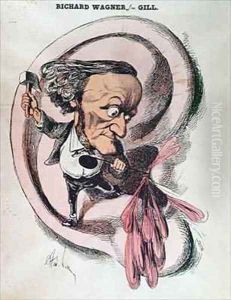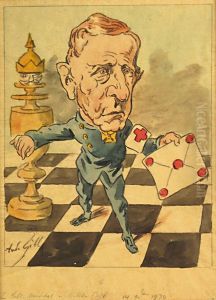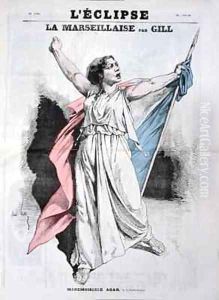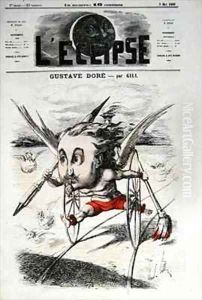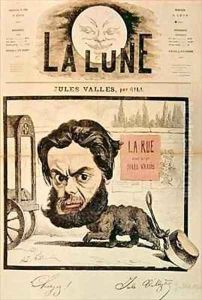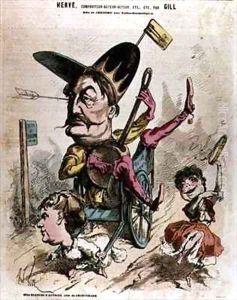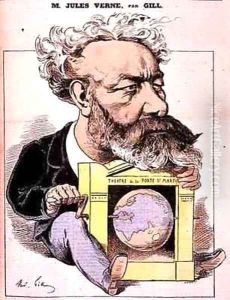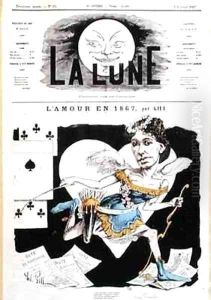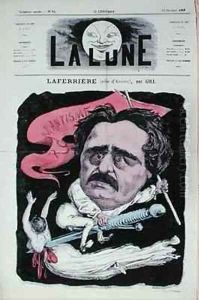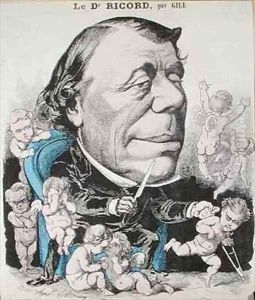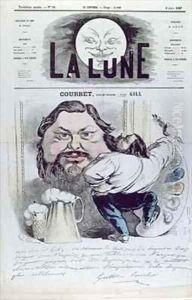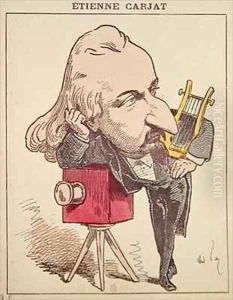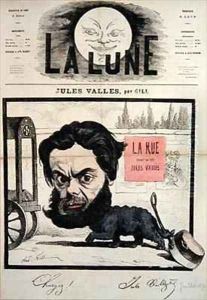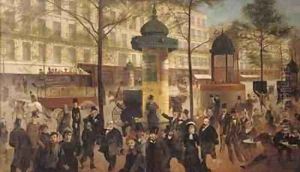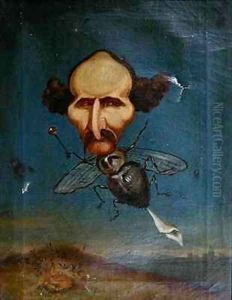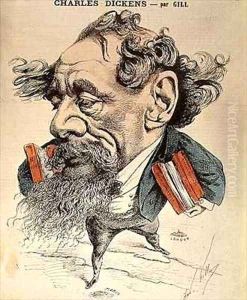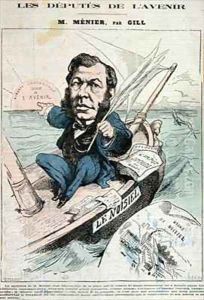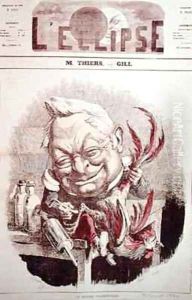Andre Gill Paintings
Louis-Alexandre Gosset de Guines, known by the pseudonym Andre Gill, was a French caricaturist, born in Paris on October 17, 1840. He became famous for his work in the weekly four-sheet newspaper 'La Lune,' where he drew large portraits in a distinctive style that eventually led to the term 'gill' being coined to describe the large-headed caricatures that became popular in Europe.
Andre Gill's father was a royalist sympathizer, and his family background influenced his early political views. He studied at the Ecole Gratuite de Dessin, also known as the Petite Ecole, where he trained under Isidore Pils and Horace Lecoq de Boisbaudran. Gill's talent for caricature was evident early on, and he quickly made a name for himself in the world of French satirical illustration.
Gill's caricatures were not just humorous but also often political in nature, which led to frequent conflicts with the authorities. During the Second French Empire, 'La Lune' was suppressed, and Gill established 'L'Eclipse,' a successor publication that continued the tradition of political satire. He depicted many prominent figures of his time, including politicians, artists, and writers, such as Charles Dickens, Victor Hugo, and Emile Zola.
His commitment to the art of caricature and political satire remained strong throughout the turbulent years of the Paris Commune and the early years of the Third Republic. Despite the political pressures and censorship, Gill maintained a critical stance toward the government and the establishment, which contributed to his fame but also to his legal troubles.
Andre Gill's later years were marked by personal and financial difficulties, and his mental health deteriorated. He was eventually committed to the Charenton asylum, where he continued to draw, although his output was understandably affected by his condition. He died on May 1, 1885, at the age of 44, leaving behind a legacy as one of France's most notable caricaturists of the 19th century. His work is remembered for its sharp wit, political acumen, and the distinctive style that influenced the development of European caricature.
